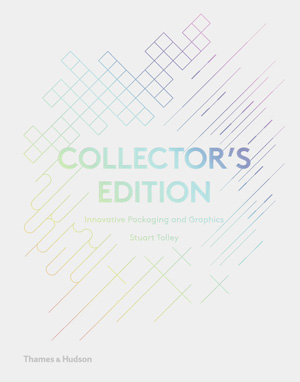Roundtable: Special Advertising Section
September 2015 Roundtable on Web Guiding & Tension Control










Mark Breen
Marketing Manager
Dover Flexo Electronics Inc.
20 years with the company
(603) 332-6150
www.dfe.com
John Lariviere
Inside Sales Manager
Dover Flexo Electronics Inc.
11 years with the company
(603) 332-6150
www.dfe.com
Paul Henke
Vice President
AccuWeb Inc.
20 years with the company
(888) 422-2893
www.accuweb.com
Q: In what ways has your company impacted the web guiding and/or tension control sector of the flexible packaging industry?
Breen: By providing a reliable means of measuring and controlling web tension to manufacturers in the flexible packaging industry, we have been able to help our customers keep their operating costs down and the quality of their finished films up.
When a film converter or printer experiences quality issues that they suspect may be related to poor tension control, they may ask us for a free analysis of potential trouble spots on their web machinery. Loss of color-to-color registration while running at speed, splicing or changing speed, inconsistent repeat length, and slack web which can cause web breaks and wrap-ups around driven rolls are perhaps the most obvious consequences of inadequate tension control on a web press.
Others include deformation of web due to stretching or wrinkling, variation of coating thickness, unwind or rewind core crushing, forced reduction of machine speed to accommodate web handling problems; hard rolls, soft rolls, telescoping rolls, excessive waste of web material, and the inability to run a wide range of web thickness’, widths and materials.
Many of these problems are simply accepted as normal and are not attributed to inadequate control of web tension. However, if printers and converters experiencing such trouble can identify the machine locations where problems seem to be occurring, they can improve efficiency and profits by employing tension control.
Henke: AccuWeb redefined accuracy and dependability for guiding clear web materials in the late 1980s and early 1990s with our patented dynamic compensation. The improved accuracy changed the perception of ultrasonic edge detectors in the industry because they self-calibrated and were easy to use. In 1999, AccuWeb again changed the industry with our WideArray edge detector. The wide detection area eliminated the need for complicated motorized positioners, dramatically reducing the complexity of installing and setting up a web guide. AccuWeb’s new DualEdge technology now allows converters to center guide webs within a single WideArray edge detector. AccuWeb was also the first web guide company to offer a direct fieldbus connection to ease communication with PLCs.
Q: What does a well-functioning web guiding and/or tension control system look like?
Henke: A well-performing web guide is calm and steady with no abrupt movements. It should react to web error quickly without ever oscillating or wrinkling the web. If a web guide is constantly moving, something is wrong.
Breen: A well-functioning tension control system will contain slightly different components depending on which part of a web process the components are installed in. A typical tension control application that we encounter is at the starting end of the press (or whatever machinery we’re retrofitting). This is the unwind zone in most cases, before the first infeed nip of the press.
The equipment we are likely to install in the unwind zone, to control the unwind shaft, is a tension transducer pair (or a single Tension Roll transducer), a tension controller and a pneumatic disk brake, or a drive or clutch. In more general terms, we’re adding a device to sense the tension in the web that’s being fed from the unwind roll, a control device to adjust the tensioning signal to a tensioning device, and the tensioning device that directly controls how much hold-back is applied to the unwind roll.
Q: What procedures are involved with troubleshooting faulty tension?
Breen: As mentioned in the response to the first question above, the production engineering team for a web press or machine might notice certain quality issues like the loss of color-to-color registration while running at speed, inconsistent repeat length, slack web wrap ups, or recurring web breaks. These are some obvious consequences of inadequate tension control on a web press.
Other tell-tale signs of tension issues include the deformation of web due to stretching or wrinkling, variation of coating thickness, unwind or rewind core crushing, forced reduction of machine speed to accommodate web handling problems, hard rolls, soft rolls, telescoping rolls, excessive waste of web material, and the inability to run a wide range of web thickness’, widths and materials.
Q: Are there any preventative measures you have set in place to avoid errors from occurring in the web guiding and/or tension control process?
Henke: All AccuWeb systems are set up and tested for a minimum of 24 hours before shipping. This ensures that the web guide arrives configured and ready to install. AccuWeb’s sales people discuss the requirements of every application. We issue quotations with detailed application data to be sure that we understand the customer’s requirements and they understand the solution we’re providing.
Lariviere: A thorough review of the converting or printing application before ordering tension components can eliminate most errors before they happen. Some customers don’t understand why we request so much detailed information before quoting the tension equipment for a particular process. If our applications engineers understand the process requirements and machinery capabilities up front, we can recommend the most appropriate combination of transducers, controllers/indicators and pneumatic brakes. If the information provided to us is accurate, we have few problems after installation.
We have designed our equipment to be user friendly and simple to operate. Simplicity minimizes the possibility of confusion and error. For instance, the TI17C and TI18C amplifiers have Quik-Cal, a Pushbutton Zero and Calibration feature that eliminates the need for a plant technician to make potentiometer adjustments. This makes the calibration procedure fast and easy.
The SteadyWeb5 controller has built in diagnostics such as error messages that appear on the Graphic User Interface (GUI) screen that identify open or short circuited transducer wiring, calibration errors, etc. More information is available on the screen than ever before. Information such as tension, setpoint, line speed, roll diameter, output percentage, and status are available on a single screen. In addition, multiple screens are accessible via a single push soft key. The GUI screen also displays informational pages that explain in detail the function of settings and options. These features add up to a powerful, user-friendly electronics package that is easy to understand and operate.
Q: What do your customers generally look for when it comes to web guiding and/or tension control?
Lariviere: Customer expectations vary greatly over the spectrum of products and processes. A printer may have more critical tension control tolerances than a blown film manufacturer. Customers want a simple, easy to understand and use tension control system. The bottom line is that our customers are looking for tension control to make a better, more consistent product.
Henke: Key is ease of installation, and ease of integration and ease of use. Converters want to have systems that they can install and set up themselves without the help of factory technicians. They also want a clear and concise means of integration with their machine logic – industry standards like Ethernet/IP. All this results in a web guide that will be easy to use.
Q: Is there anything else you feel is important to share about web guiding/tension control?
Henke: System integration/communication is critical to meeting the control needs in today’s modern converting operations. That’s why our new EVO 150 controller controllers offer EtherNet/IP, PROFINET, Modbus TCP-IP, and discrete IO communication protocols for easy integration with existing PLC controls.
Lariviere: Keep it simple, and let your tension control supplier handle any complex sizing and configuration issues. We have customers that end up buying our tension controllers after trying to design their own because it can become more complicated than it looks. We are committed to providing the most reliable tension control systems available. We listen carefully to customer challenges, concerns and suggestions. And then we implement the suggestions into new product designs. Tension control is our passion because it’s all we do.
Looking for a reprint of this article?
From high-res PDFs to custom plaques, order your copy today!













